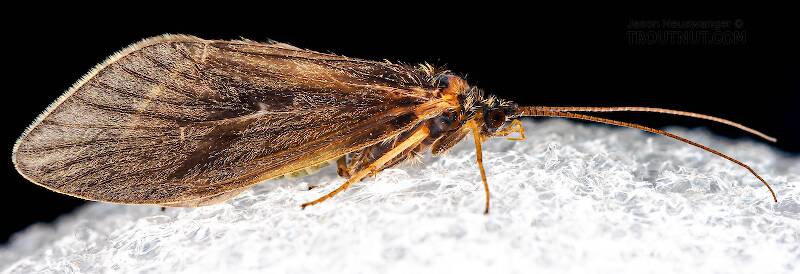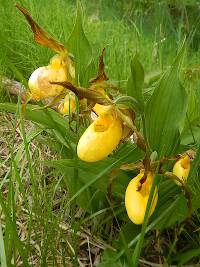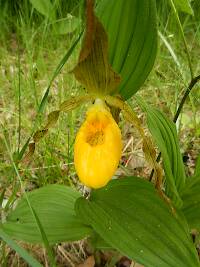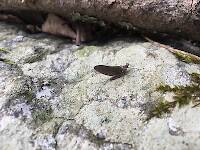
Salmonflies
Pteronarcys californica
The giant Salmonflies of the Western mountains are legendary for their proclivity to elicit consistent dry-fly action and ferocious strikes.
Featured on the forum

Nymphs of this species were fairly common in late-winter kick net samples from the upper Yakima River. Although I could not find a key to species of Zapada nymphs, a revision of the Nemouridae family by Baumann (1975) includes the following helpful sentence: "2 cervical gills on each side of midline, 1 arising inside and 1 outside of lateral cervical sclerites, usually single and elongate, sometimes constricted but with 3 or 4 branches arising beyond gill base in Zapada cinctipes." This specimen clearly has the branches and is within the range of that species.

Troutnut is a project started in 2003 by salmonid ecologist Jason "Troutnut" Neuswanger to help anglers and
fly tyers unabashedly embrace the entomological side of the sport. Learn more about Troutnut or
support the project for an enhanced experience here.

I captured this specimen in the same color as this photograph, during its egg-laying flight. The emergers are much lighter.
Flytyer0423 on Aug 11, 2009August 11th, 2009, 9:09 am EDT
do all caddis flies have brown or a close shade to brown legs all the ones i looked at so far are either brown or a light brown almost tan
(vistit my website @) www.natureboyoutdoors.weebly.com
CaseyP on Aug 11, 2009August 11th, 2009, 3:18 pm EDT
this might be the only exception. "Creno" provided guidance about the small black caddis on the Big Horn River in Montana:
the ones in my face and on my clothes all had black legs. bleaahhh--they were everywhere! ahh, the joys of a good hatch...
The little black caddis of Bighorn fame is Amiocentrus aspilus. Pretty rare every where but there. The wings are iridescent black - shiny blue-greeny black. Out here we say magpie black.
the ones in my face and on my clothes all had black legs. bleaahhh--they were everywhere! ahh, the joys of a good hatch...
"You can observe a lot by watching." Yogi Berra
GONZO on Aug 11, 2009August 11th, 2009, 5:14 pm EDT
Josh,
The short answer would be no, but legs that are some shade of brown or tan are pretty common. As Casey points out, some have blackish legs, and others can have rust, orange, yellow, gray, or whitish legs. Many have plain-colored legs, but some have distinctly banded legs.
The short answer would be no, but legs that are some shade of brown or tan are pretty common. As Casey points out, some have blackish legs, and others can have rust, orange, yellow, gray, or whitish legs. Many have plain-colored legs, but some have distinctly banded legs.
Quick Reply
Related Discussions
Topic
Replies
Last Reply
0
May 25, 2012
by Jmd123
by Jmd123
4
Jun 3, 2013
by GldstrmSam
by GldstrmSam
6
Nov 18, 2011
by Wiflyfisher
by Wiflyfisher





